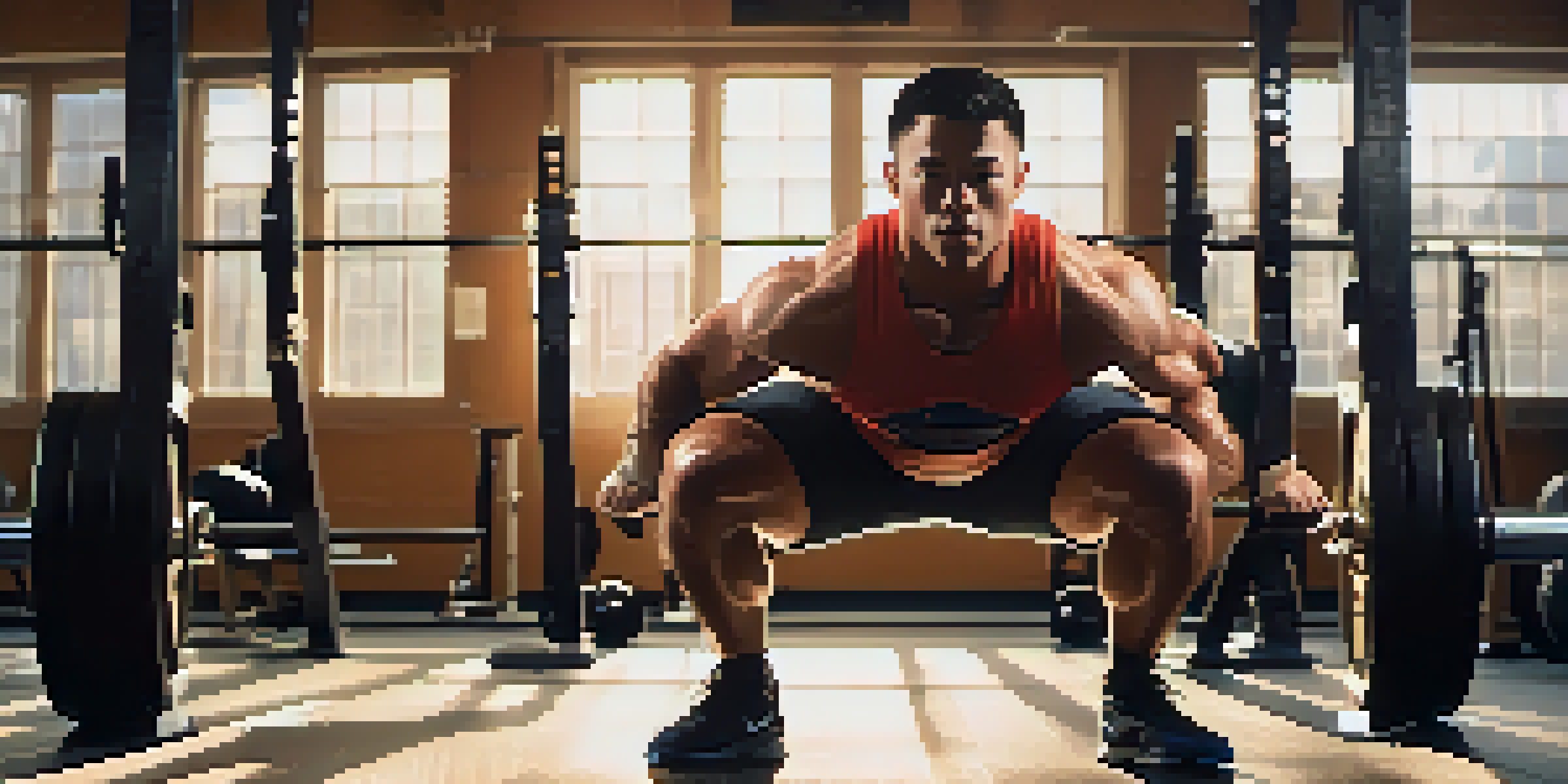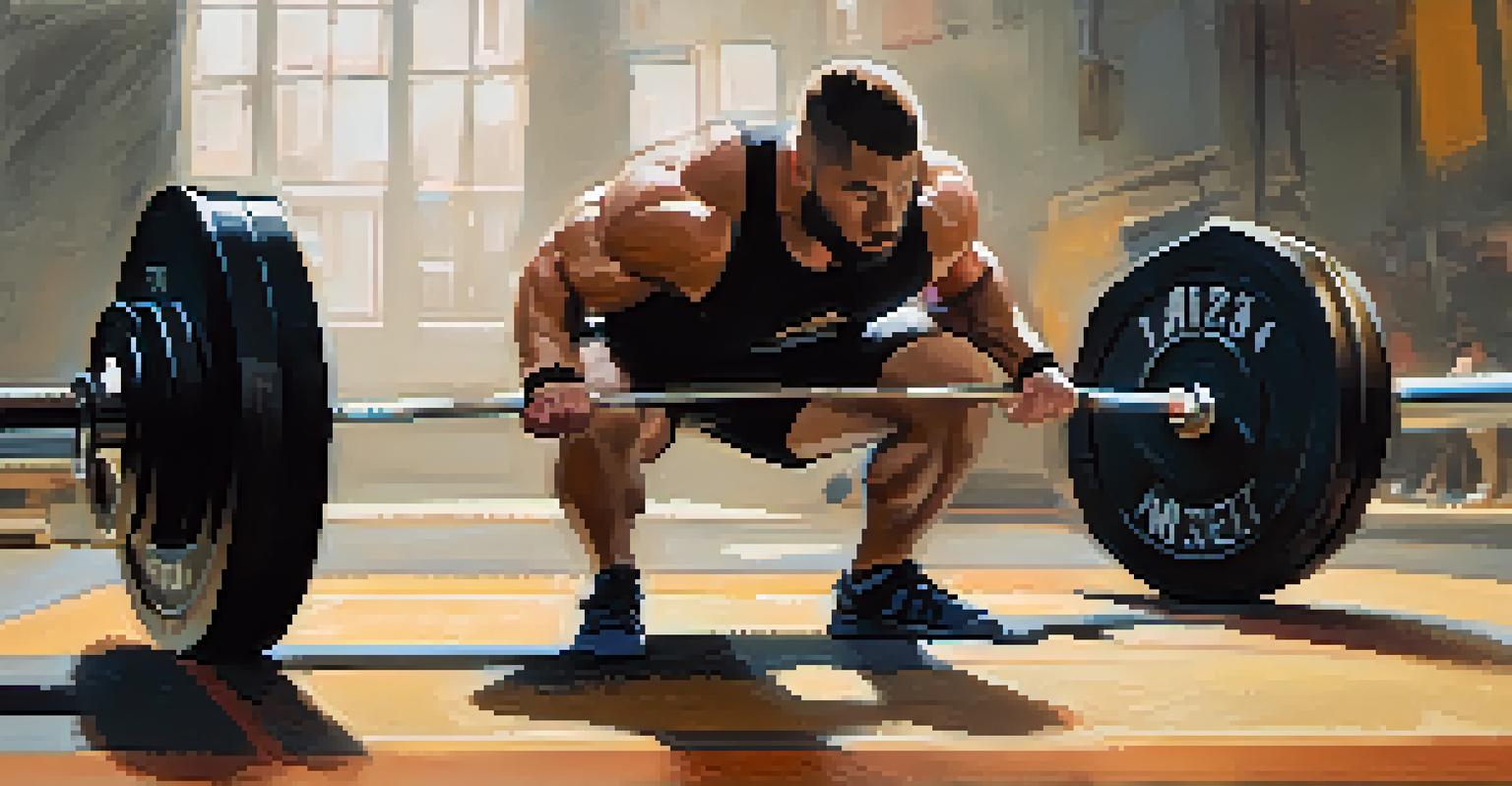The Importance of Technique in Powerlifting for Strength Gains

Understanding Powerlifting: More Than Just Lifting Heavy
Powerlifting is often perceived as a sport where the goal is simply to lift the heaviest weight possible. However, it's much more nuanced than that. Technique plays a pivotal role in not just how much you can lift, but also how safe and effective your training can be. As the saying goes, 'You can't build a skyscraper on a shaky foundation.'
Strength does not come from physical capacity. It comes from an indomitable will.
Each lift in powerlifting—squat, bench press, and deadlift—requires a specific technique that maximizes efficiency. A good technique allows lifters to engage the right muscles and distribute the load correctly, which is essential for both performance and injury prevention. Think of technique as the blueprint for your lifting journey.
Neglecting proper technique can lead to poor lifting habits, which can become ingrained over time and are difficult to break. Just as a musician practices scales to master their instrument, powerlifters must refine their technique to achieve true strength gains.
The Role of Technique in Injury Prevention
One of the most significant benefits of focusing on technique is injury prevention. Poor form can lead to unnecessary strain on muscles and joints, resulting in injuries that can sideline you for weeks or even months. By mastering proper technique, you reduce the risk of injuries, allowing for consistent training.

Consider how a runner's stride affects their knees and hips. Similarly, a powerlifter's form can impact their back, shoulders, and knees. For example, squatting with the knees caving in can cause serious knee injuries over time. Proper technique ensures that your body is aligned and moving as it should be.
Technique Prevents Injuries
Focusing on proper lifting technique reduces the risk of injuries, allowing for safer and more consistent training.
Injuries not only derail your training but can also have long-term effects on your strength journey. Prioritizing technique helps to ensure that you're lifting safely while making progress, so you can enjoy the sport without the constant worry of getting hurt.
How Technique Enhances Strength Gains
Good technique isn't just about safety; it directly impacts your strength gains. When you lift with proper form, you can generate more power and efficiency, allowing you to lift heavier weights. This is because the right technique ensures that the target muscles are engaged optimally.
The only way to do great work is to love what you do.
Think of it this way: if you're trying to push a car, using your body in the best possible way allows you to exert more force. In powerlifting, technique serves a similar purpose, enabling you to maximize your strength potential. The more efficiently you lift, the more weight you can handle.
Therefore, by honing your technique, you might find that you can lift weights that previously felt impossible. This creates a positive feedback loop, where improved technique leads to higher weights and, in turn, encourages further refinement of your skills.
The Mind-Muscle Connection: Importance of Technique
The mind-muscle connection is a term often thrown around in fitness circles, but it holds particular significance in powerlifting. A strong connection between your mind and the muscles you're engaging can enhance your performance. This connection is largely fostered through proper technique.
When you focus on your technique, you're not just lifting; you're thinking about which muscles are working and how they're functioning. This awareness can lead to better activation of the right muscle groups, ultimately leading to greater strength gains. It's like tuning into your body's rhythm.
Technique Boosts Strength Gains
Good technique not only enhances safety but also maximizes power and efficiency, enabling you to lift heavier weights.
Visualizing the lift while maintaining proper form helps in reinforcing this connection. The more you practice good technique, the more automatic this connection becomes, allowing you to push your limits effectively.
Breaking Down the Big Three Lifts: Technique Matters
Each of the three main powerlifting lifts—squat, bench press, and deadlift—requires unique technical considerations. For example, in the squat, maintaining a neutral spine and proper knee alignment is crucial for both safety and efficiency. A minor deviation in form can significantly impact your lift.
In the bench press, hand placement and elbow positioning are key to maximizing strength while minimizing shoulder strain. Many lifters don't realize that a slight adjustment in their grip can make a world of difference. This highlights how crucial technique is across different lifts.
Finally, in the deadlift, the initial setup can determine whether you succeed or struggle with the weight. A strong, stable position at the start allows for a powerful lift. Therefore, mastering the technique for each lift is essential to ensure you're getting the most out of your training.
The Role of Coaching in Improving Technique
Having a knowledgeable coach can greatly enhance your understanding and execution of proper technique in powerlifting. Coaches offer insights that you may not notice yourself, helping to identify areas for improvement. Their guidance can lead to quicker progress and enhanced safety.
An experienced coach can provide real-time feedback during your lifts, allowing you to make adjustments on the spot. This immediate correction can prevent bad habits from forming and help you to internalize good technique. It's like having a personal trainer for your lifting journey.
Coaching Enhances Technique Mastery
Having a knowledgeable coach provides valuable feedback and personalized guidance, accelerating your progress and improving safety.
Moreover, a coach can tailor training programs to your specific needs, ensuring that you focus on technique while also working on building strength. This personalized approach can make all the difference in achieving your powerlifting goals.
The Long-Term Benefits of Prioritizing Technique
Investing time and effort into mastering your technique yields long-term benefits that extend beyond strength gains. A solid foundation in technique can enhance your overall athletic performance, making you a more versatile lifter. It can also contribute to better performance in other sports or physical activities.
Additionally, focusing on technique fosters a deeper understanding of your body and its mechanics. This knowledge can lead to a more intuitive approach to lifting and training, allowing for smarter workout choices as you progress. It's about building a lifelong relationship with strength training.

In the end, prioritizing technique not only protects your body but also enhances your training experience. You'll find that the more you refine your skills, the more enjoyable and rewarding your powerlifting journey becomes.